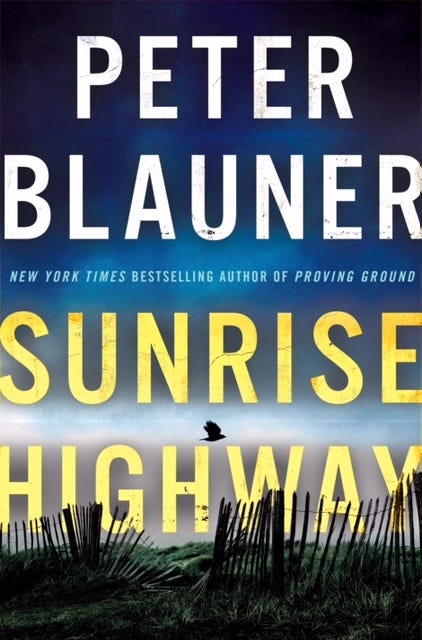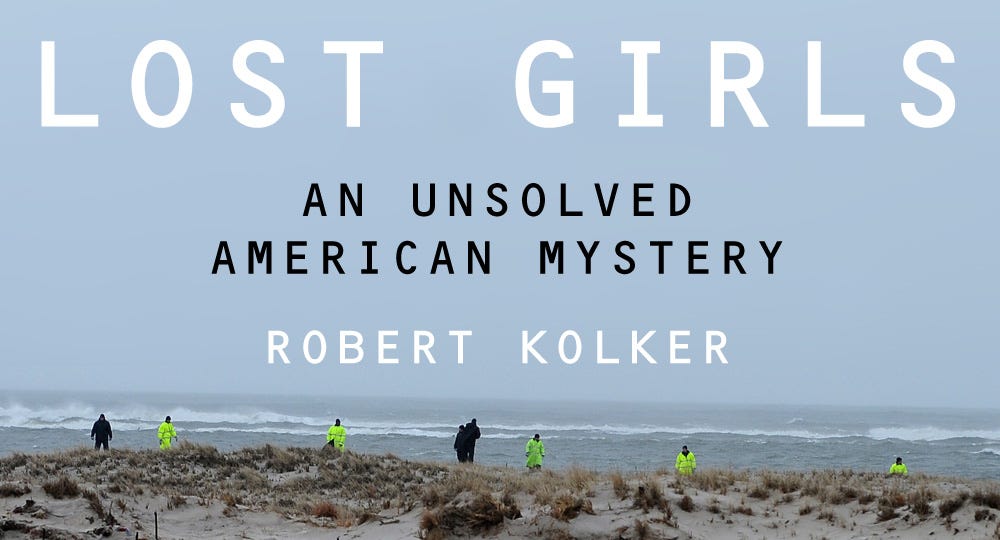The Long Island Serial Killer Case
Fact Versus Fiction
The thing I keep thinking about is the big man on his cellphone, lumbering down a midtown street on his lunch hour, sweating like an ox.
Rex Heuermann is one of those people who take up a lot of space, but somehow don’t really command your attention until you look closely. You can imagine him melting into the Herald Square crowds. Just another schmuck with damp half-moons under his arms, bitching at his kids or complaining to his accountant while people swarm in and out of Penn Station. Except on this August day, in 2009, at about 11:29 a.m., Heuermann was allegedly using a missing woman’s cellphone to make the last of several taunting calls to her family members, according to prosecutors, eventually telling Melissa Bathelemy’s younger sister he’d had sex with Melissa before murdering her.
On Friday morning, July 14, news broke that Heuermann, an architect who worked as a “facilitator” in Manhattan, had been arrested for committing at least three of the eleven murders in the notorious Long Island Serial Killer case. Press people flocked to Heuermann’s home in Massapequa Park, the same area that brought us Amy Fisher and Joey Buttafuco, Jessica Hahn of the Tammy and Jim Bakker scandal, the Baldwin Brothers, mobsters Roy DeMeo and Carlo Gambino, and various regulars from the Howard Stern show.
My lawyer friend Bob, who hails from out there, describes it as “the vortex of insanity.”
Naturally, neighbors remarked on the dilapidated condition of Heuermann’s house and his bland but vaguely menacing demeanor. A lengthy interview popped up on YouTube with Heuermann discoursing pedantically about the intricacies of New York real estate codes while a wildly-enthusiastic Frenchman laughs and nods in encouragement. To have watched that clip (now taken down) after seeing Anthony Hopkins play Hannibal Lecter is to experience the true dissonance between reality and fantasy.
And just to complete the vortex of demented déjà vu, Rudolph Giuliani cruised by over the weekend to talk to cops searching Heuermann’s house, in preparation for his new livestream show “America’s Mayor Live.” Even the New York Post found that bizarre.
At the same time, my phone was blowing up with texts and emails from people asking if I hadn’t written a book about this grisly business just a few years ago. The answer was yes - sort of. I published a novel called SUNRISE HIGHWAY in 2018 that was loosely based on the case. This was after I’d worked for several television shows that did episodes inspired by it (written by others).
None of us had a figure like Rex Heuermann in our stories. In my case, I moved the scenes of the crimes from Ocean Parkway along the Atlantic beaches to Sunrise Highway, a determinedly unlovely stretch of road from Brooklyn to Old Montauk Highway. And right from the beginning of the book, I made it clear that my perpetrator was a Long Island police chief who accrued and abused power he’d been given by his enablers for various reasons, allowing him to get away with murder for years.
Nevertheless, there were some disturbing parallels between fact and fiction.
In both the novel and real life, a break in the case comes from a pimp who becomes a cooperating witness. In the actual investigation, the lead came from a pimp who remembered a hulking customer driving up in a Chevrolet Avalanche pick-up truck to see a sex worker named Amber Lynn Costello a few days before she disappeared. In my novel, a Latina detective from Brooklyn pounces on a similar lead. In real life, the lead was lost in the mix for years. I hadn’t quite imagined that scenario. Nor had I quite imagined the real life pain and fear of the victims and their surviving family members. Though I tried.
All of this got me thinking about why we tell so many of these ghastly stories and why so many people want to hear them. Don’t get me wrong. Eleven bodies along a highway would be major news at any time, in any place. But when Rudy Giuliani shows up on your block over a summer weekend to do a show, it’s time for a little soul-searching.
The Long Island Serial Killer case had become part of the True Crime industry long before anyone was thinking about Rex Heuermann. There have been hundreds of newspaper stories, magazine articles, TV documentaries, and podcasts since a police dog found the remains of the first body. Some are very good. Robert Kolker’s nonfiction book THE LOST GIRLS is an exemplary work of thorough and compassionate journalism. I read it carefully before I started writing SUNRISE HIGHWAY, to avoid stealing too much from the real life case. Some of the other material I looked at was obviously assembled more hastily.
In fact, a lot of the True Crime programming you see, especially on certain cable TV channels, is cheap and exploitative. The emphasis is on cheap, because these programs are relatively inexpensive to produce and of course, often don’t involve members of the writers’ or actors’ unions. You’ll see a lot more of it grinded out during the Big Strike. The tropes on these shows – the crime scene recreations, the talking head detectives, the commercial break cliffhangers – reliably induce the combination of titillation and anxiety that keeps viewers addicted. But, look, I’m not pointing the finger. I was a journalist myself and not always a very sensitive one. But the question is – especially when the pain is still fresh – does the potential for insight justify wading through all the gore to get to it?
Of course, the other way these stories get told is through scripted movies and television shows, like the ones I’ve worked on. But there are aspects to that form which occasionally trouble me as well. One is the convention that justice almost always wins in the end and the good guys always do what’s right. Even a casual look at the history of the real Gilgo Beach case will tell you that it ain’t necessarily so. Another thing that I “bump on” (that’s a TV term for something you don’t like) is that depicting serial killers as being more common than school crossing guards in America can give you the feeling that “evil” is always just waiting around the corner.
But what bothers me even more about relying on serial killers as boogeymen in entertainment, is that it’s too easy. It allows writers and producers to dodge the tough work of coming up with good gripping stories about the real reasons people do crime: guns, drugs, terrorism, inequality, woman hatred and culturally accepted violence (I’ll have more to say about that one in another column). Stories that would say more about “us” and less about “them.”
All that said, there are occasionally acts of transcendent unadulterated evil, which we can’t look away from, and the Gilgo Beach murders are chilling, sordid reminders of that.
I don’t know if Rex Heuermann is responsible for all these deaths, and possibly others we don’t know about yet. Everyone in America is innocent until proven guilty.
But if he is responsible, he should rot in hell.




Good column.
I have wondered how any people are still alive in England based on all the “soft core” murder mysteries that I watch.
I agree that when the serial killer enters the story it is a kind of cheating. The SK can & will do anything and so all that remains is incarceration or death by cop and The End.
Also, the Idaho college student murders took me to Connelly's Desert Star. They used investigative genetic genealogy. Maybe they got the Gilgo Beach guy the same way, going through the pizza box and harassing phone calls. It's like going to class, we learn through great crime fiction writers. Still remember that hurricane.